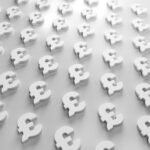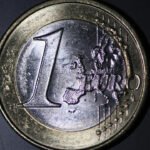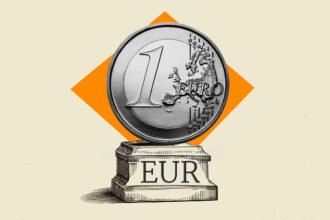EUR/USD moves sideways in a narrow range above 1.1600 in the European session on Monday after ending the previous week marginally lower. The pair’s technical outlook highlights a neutral stance in the near term as market focus shifts to the Federal Reserve’s (Fed) and the European Central Bank’s (ECB) policy meetings.
Euro Price Today
The table below shows the percentage change of Euro (EUR) against listed major currencies today. Euro was the strongest against the Swiss Franc.
| USD | EUR | GBP | JPY | CAD | AUD | NZD | CHF | |
|---|---|---|---|---|---|---|---|---|
| USD | 0.07% | -0.01% | 0.05% | -0.13% | -0.38% | -0.17% | 0.13% | |
| EUR | -0.07% | -0.05% | 0.00% | -0.18% | -0.41% | -0.23% | 0.11% | |
| GBP | 0.01% | 0.05% | 0.06% | -0.13% | -0.35% | -0.18% | 0.15% | |
| JPY | -0.05% | 0.00% | -0.06% | -0.20% | -0.46% | -0.23% | 0.07% | |
| CAD | 0.13% | 0.18% | 0.13% | 0.20% | -0.25% | -0.03% | 0.29% | |
| AUD | 0.38% | 0.41% | 0.35% | 0.46% | 0.25% | 0.18% | 0.52% | |
| NZD | 0.17% | 0.23% | 0.18% | 0.23% | 0.03% | -0.18% | 0.31% | |
| CHF | -0.13% | -0.11% | -0.15% | -0.07% | -0.29% | -0.52% | -0.31% |
The heat map shows percentage changes of major currencies against each other. The base currency is picked from the left column, while the quote currency is picked from the top row. For example, if you pick the Euro from the left column and move along the horizontal line to the US Dollar, the percentage change displayed in the box will represent EUR (base)/USD (quote).
The data from the United States (US) showed on Friday that annual inflation, as measured by the change in the Consumer Price Index (CPI), edged higher to 4% in September from 3.9% in August. On a monthly basis, the CPI and the core CPI, which excludes volatile food and energy prices, rose 0.3% and 0.2%, respectively. Both of these prints came in below analysts’ estimate and made it difficult for the US Dollar (USD) to gather strength heading into the weekend.
Early Monday, improving risk mood helps EUR/USD hold its ground as investors grow optimistic about the US and China reaching an agreement to de-escalate the trade conflict.
Over the weekend, US Treasury Secretary Scott Bessent commented on the meeting he had with top Chinese officials and explained that China is ready to make a trade deal to avert a new 100% tariff on Chinese imports. Bessent further noted that a framework, which is expected to include “some kind of a deferral” on the rare earth export controls that China intended to apply, is prepared for US President Donald Trump’s upcoming meeting with Chinese President Xi Jinping.
The economic calendar will not offer any high-tier data releases on Monday. In case risk flows continue to dominate the action in the second half of the day, EUR/USD is likely to keep its footing. Nevertheless, investors could refrain from taking large positions ahead of the Fed and ECB policy announcements.
EUR/USD Technical Analysis

The Relative Strength Index (RSI) indicator stays near 50 and EUR/USD trades at around the 20-day Simple Moving Average, reflecting the pair’s indecisiveness in the near term.
On the upside, 1.1660 (100-day SMA) aligns as the next resistance level ahead of 1.1690-1.1700 (200-period SMA, Fibonacci 38.2% retracement level of the latest uptrend) and 1.1760 (Fibonacci 23.6% retracement).
Looking south, support levels could be spotted at 1.1580 (Fibonacci 61.8% retracement), 1.1550 (static level) and 1.1500 (Fibonacci 78.6% retracement).
Euro FAQs
The Euro is the currency for the 19 European Union countries that belong to the Eurozone. It is the second most heavily traded currency in the world behind the US Dollar. In 2022, it accounted for 31% of all foreign exchange transactions, with an average daily turnover of over $2.2 trillion a day.
EUR/USD is the most heavily traded currency pair in the world, accounting for an estimated 30% off all transactions, followed by EUR/JPY (4%), EUR/GBP (3%) and EUR/AUD (2%).
The European Central Bank (ECB) in Frankfurt, Germany, is the reserve bank for the Eurozone. The ECB sets interest rates and manages monetary policy.
The ECB’s primary mandate is to maintain price stability, which means either controlling inflation or stimulating growth. Its primary tool is the raising or lowering of interest rates. Relatively high interest rates – or the expectation of higher rates – will usually benefit the Euro and vice versa.
The ECB Governing Council makes monetary policy decisions at meetings held eight times a year. Decisions are made by heads of the Eurozone national banks and six permanent members, including the President of the ECB, Christine Lagarde.
Eurozone inflation data, measured by the Harmonized Index of Consumer Prices (HICP), is an important econometric for the Euro. If inflation rises more than expected, especially if above the ECB’s 2% target, it obliges the ECB to raise interest rates to bring it back under control.
Relatively high interest rates compared to its counterparts will usually benefit the Euro, as it makes the region more attractive as a place for global investors to park their money.
Data releases gauge the health of the economy and can impact on the Euro. Indicators such as GDP, Manufacturing and Services PMIs, employment, and consumer sentiment surveys can all influence the direction of the single currency.
A strong economy is good for the Euro. Not only does it attract more foreign investment but it may encourage the ECB to put up interest rates, which will directly strengthen the Euro. Otherwise, if economic data is weak, the Euro is likely to fall.
Economic data for the four largest economies in the euro area (Germany, France, Italy and Spain) are especially significant, as they account for 75% of the Eurozone’s economy.
Another significant data release for the Euro is the Trade Balance. This indicator measures the difference between what a country earns from its exports and what it spends on imports over a given period.
If a country produces highly sought after exports then its currency will gain in value purely from the extra demand created from foreign buyers seeking to purchase these goods. Therefore, a positive net Trade Balance strengthens a currency and vice versa for a negative balance.




















